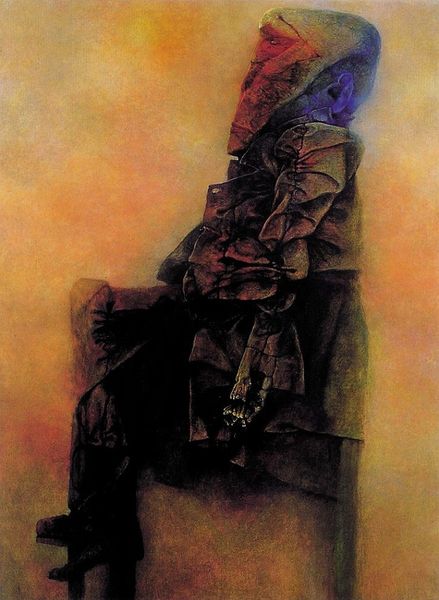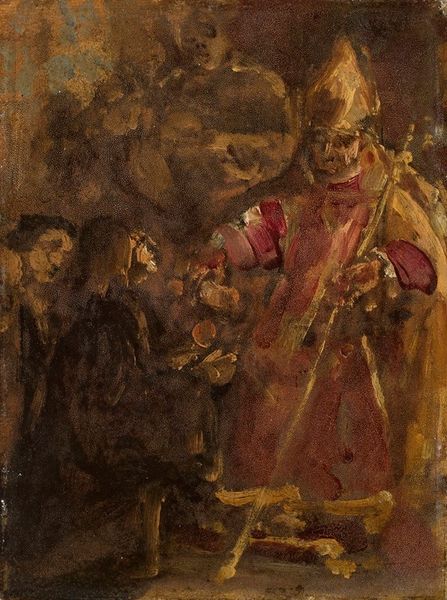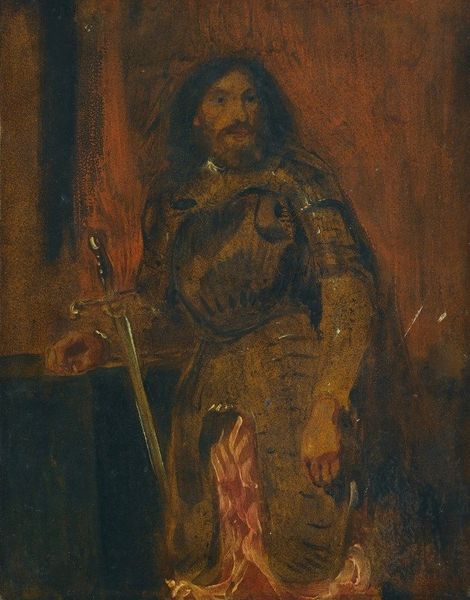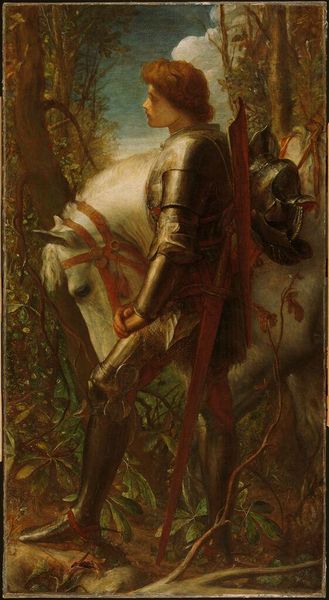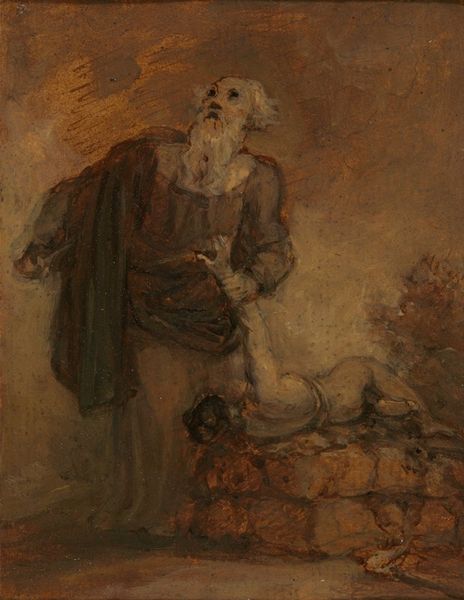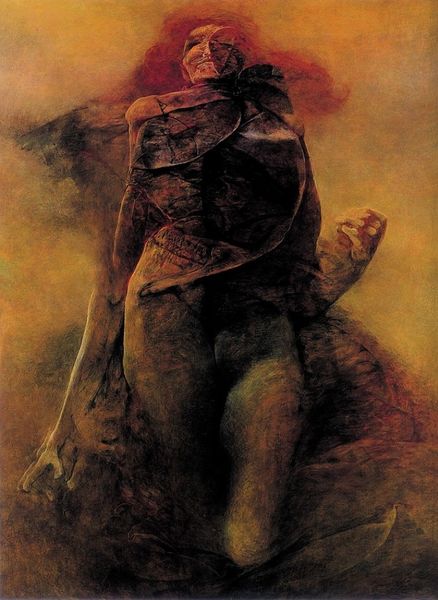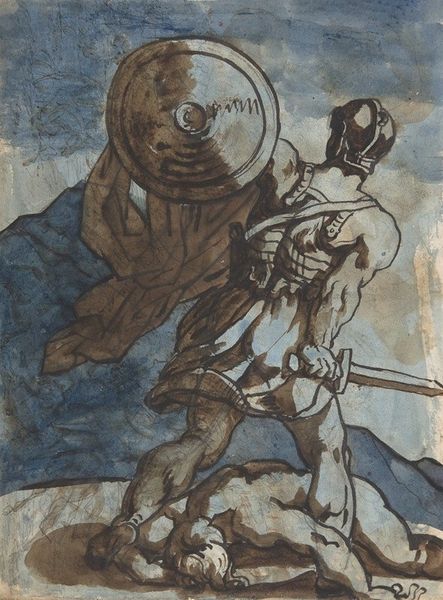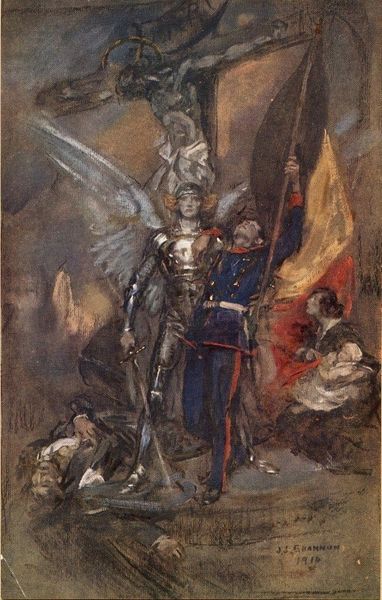
Sketch for the painting ‘Wacław Wilczek during the defence of the Benedictine monastery in Trzebice in Moravia in 1468 against Maciej Korwin’ 1876
0:00
0:00
Copyright: Public Domain: Artvee
Editor: We’re looking at Jan Matejko’s "Sketch for the painting ‘Wacław Wilczek during the defence of the Benedictine monastery in Trzebice in Moravia in 1468 against Maciej Korwin’" from 1876. It appears to be an oil sketch, and it’s intensely dramatic. I’m struck by the bold brushstrokes and the almost overwhelming sense of urgency and struggle. What compositional elements stand out to you? Curator: The striking element of the work lies primarily in the dynamic tension established by contrasting colours and the palpable energy communicated through the artist's handling of form. Note how the vibrant reds and oranges are juxtaposed against the cooler blues and greys of the armour. It lends a kineticism to the composition. Consider also, the vigorous brushwork, particularly in the rendering of Wacław's beard and clothing. Do you notice how the paint seems to embody the turmoil of the historical moment itself? Editor: Yes, the application of the paint itself contributes to the feeling. The loose brushstrokes give it a sense of immediacy, like we’re seeing the scene unfold in real-time. Does that energetic technique affect your reading of the piece beyond the initial drama? Curator: Precisely. One might explore the use of line and contour to demarcate the boundaries of the subject’s figure and its interaction with the background. There's a flattening effect, is there not? By that I mean, Matejko deliberately manipulates perspective. Can we fully distinguish between the figure's space and the events that surround him? What emerges from that observation? Editor: I see it now. The lack of clear distinction flattens the narrative, almost trapping the figure within the drama. It brings an emotional claustrophobia to the fore, like a subjective rather than purely objective representation of history. I wouldn’t have noticed the nuances of those flattening techniques without your insights. Curator: And in observing these structural components we apprehend meaning beyond that suggested by the scene alone. Such focused consideration can transform our relationship to artwork, can't it? Editor: It certainly does, thank you for sharing these insights.
Comments
No comments
Be the first to comment and join the conversation on the ultimate creative platform.


